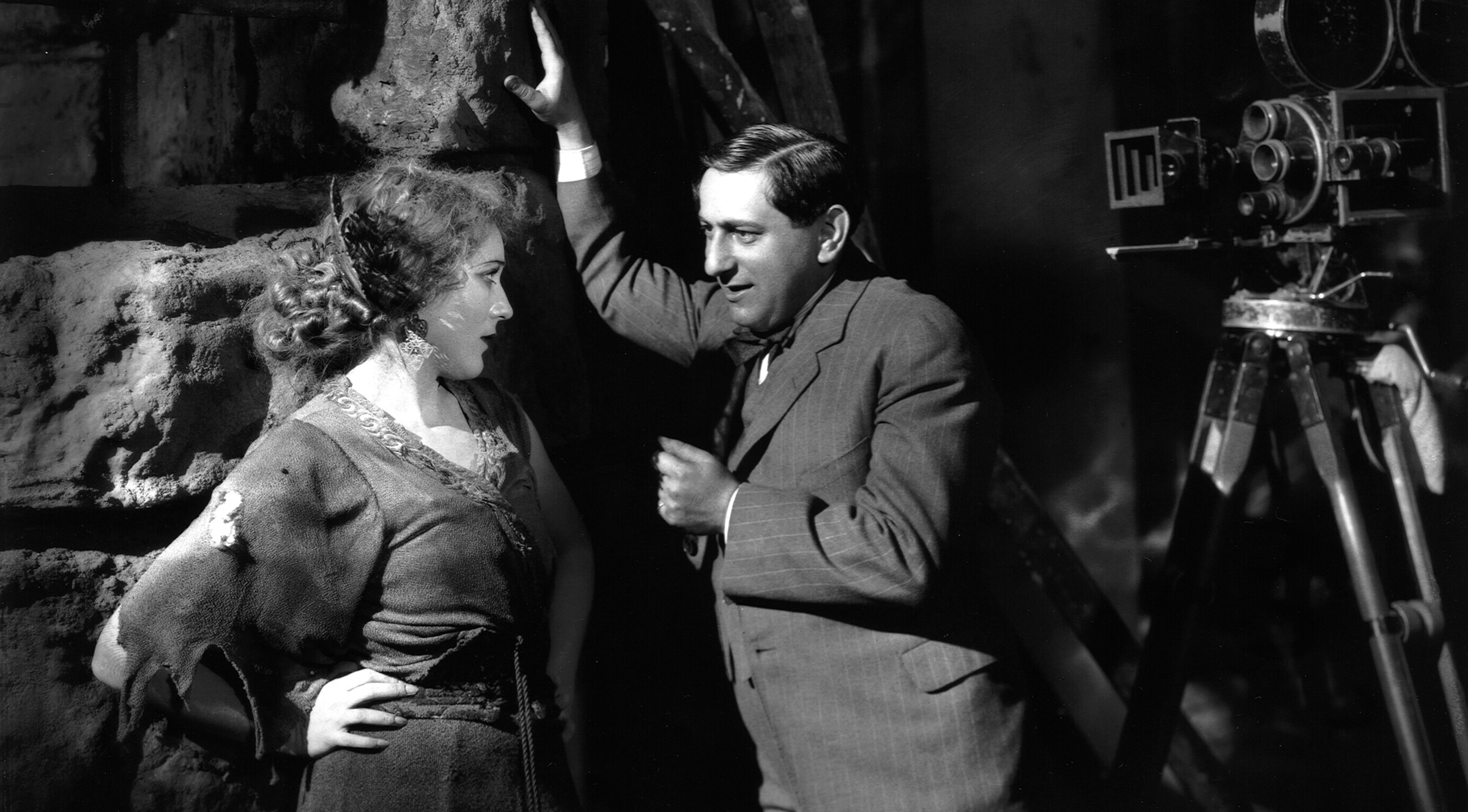This feature was published in conjunction with the screening of The Marriage Circle at A Day of Silents 2019
A stage actor before he was a film director Ernst Lubitsch was notorious for acting out the roles for his performers down to the smallest gesture. As exasperating as it may have been to the actors to be controlled in this way, the strategy “may explain the consistency of tone in his films,” according to Rob Kendt of Backstage magazine, who notes about Lubitsch’s talkies, “the teasing, modulated diction giving way to sharp bursts and left turns, all orchestrated with an exquisite sense of style and timing.” The performances in his films are part of what earned his style the sobriquet, the “Lubitsch Touch,” which is evident from his first American silents.
The German-born Lubitsch had a rough beginning in Hollywood and famously clashed with Mary Pickford on the historical romance, Rosita (1923), his American directorial debut. Pickford called him “a perfect autocrat” and later explained her dislike of her performance as a street singer in Seville who catches the eye of the king: “Being a European, he liked to do naughty and suggestive things. He tried to be as moral as he knew how and I tried to be slightly naughty … the result was pretty terrible.” Critics and audiences at the time disagreed, responding favorably to both the directing and Pickford’s performance.
The elegantly spare and modern The Marriage Circle must have been a welcome change for Lubitsch after the headaches of Pickford and a big budget period film, and it marks a significant turning point in his career toward the sly, sophisticated comedies that are his legacy. Cinematographer Charles Van Enger recalled working on the first of five films with him: “He would come in in the morning, no script, he would know exactly where everybody was going to be, he would know what camera angle he wanted, and not once did he look through the camera as long as I was with him.” When they were setting up, Van Enger noticed how Lubitsch acted out each part himself to show the actors how he wanted them to do it. The cinematographer shot the preparations and later showed them along with the dailies, which delighted Lubitsch who grew to expect them, eagerly asking Van Enger, “Sharley, where’s my scenes?” Actor Adolphe Menjou, who plays jaded husband to Marie Prevost’s boldly faithless wife, was less amused. “All I ever had to do to make Lubitsch happy,” he quipped about his two films with the director, “was to step before the camera and mimic every gesture he gave me.”
Marie Prevost, plucked from a career of stereotypical roles by Lubitsch, told a writer who visited The Marriage Circle set that she was “terribly discouraged” when shooting began. “He made me do simple scenes—just coming in and out of rooms—fifteen or twenty times. At first it seemed as tho there wasn’t any sense to it at all. Then it began to dawn upon me what the art of acting was all about.” This apparently heavy-handed direction on the set resulted in the subtlest of portrayals and critics took note. The New York World exclaimed: “Mr. Lubitsch is a man who will tell you a chapter with the fling of an actor’s hand, the shifting of a silken ankle. He can do more with a half minute of utter silence on the part of a character than many directors find possible to do with fifteen minutes of ponderous dramatic acting.” Moving Picture News described the effect: “We could mention a dozen scenes, which are as light as moondust—and which wouldn’t bear analysis judging them by dramatic substance. Yet they scintillate with delightful subtleties.” The New York Times’ curmudgeonly critic Mordaunt Hall led his review simply: “It is unalloyed bliss to watch The Marriage Circle.”
Ernst Lubitsch was in his early thirties and just getting started. Working on his third American film, Forbidden Paradise, Lubitsch guided star Pola Negri, who had become famous in the seven films they made together in Germany, to the kind of performance that eluded her in her previous American releases. “Lubitsch,” wrote Picture-Play, “seems to give her face gayety, happiness and charm.” For Kiss Me Again, in which he cast Marriage Circle’s Marie Prevost and Monte Blue in another domestic comedy, the critics heaped more praise on the director’s maturing style: “He takes Marie Prevost, Monte Blue, Clara Bow and John Roche and makes them excruciatingly funny,” said Picture-Play’s clearly smitten reviewer about the now lost film. “After most domestic mix-ups, where things either end in tragedy or Keystone kops, it is pleasant to find a happy medium where old situations are ridiculed and made inconsequential.”
After ten American silents, Lubitsch transitioned to sound with a series of musical comedies (remaking The Marriage Circle in 1932 as One Hour With You starring Maurice Chevalier and Jeannette MacDonald) then went on to perfect the romantic comedy, always with his artful dissection of sex and romance. When he died of a heart attack in 1947, at the age of fifty-five, Lubitsch left behind many classics, including Trouble in Paradise, Design for Living, and Ninotchka, as well as many admirers. In Who the Devil Made It, a series of conversations with giants of Hollywood’s Golden Age, author Peter Bogdanovich writes that Lubitsch was the one filmmaker that “nearly every other director I ever interviewed mentioned with awe as among the very best.”

